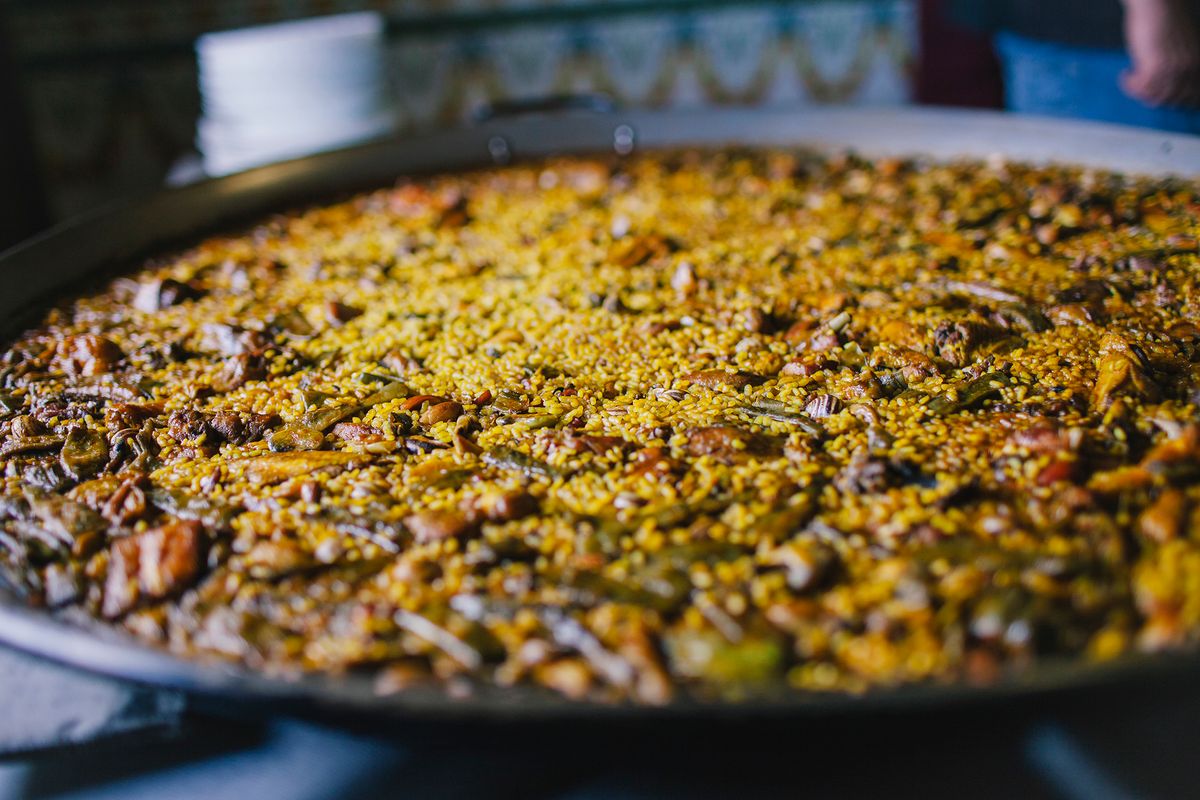
Spain is renowned not only for its beaches, festivals, and architecture but also for its unique culinary culture, which varies widely across regions. Spanish cuisine is celebrated for its fresh ingredients, aromatic spices, and diverse dishes. From the northern coastal towns to the warm southern regions, food in Spain is a true delight for food lovers, with recipes and traditions passed down through generations. Let’s take a closer look at Spanish cuisine and discover the dishes worth trying in different parts of this amazing country.
Traditional Spanish Dishes
Paella
One of Spain’s most famous dishes, paella originates from Valencia. It is a delicious combination of rice with vegetables, seafood, or meat, flavored with saffron. There are various types of paella, including seafood paella, chicken and rabbit paella, or a mixed version with both seafood and meat.
Tortilla (Spanish Omelette)
The Spanish tortilla is a thick omelette made from eggs and potatoes, sometimes with onions. This simple yet filling dish is often served as tapas (small appetizers) or as a main course.
Gazpacho and Salmorejo
In the south, particularly in Andalusia, chilled soups are popular, especially on hot summer days. Gazpacho is a cold tomato soup made with ripe tomatoes, peppers, cucumbers, and olive oil. Salmorejo is a thicker version of gazpacho, often made with bread and served with diced boiled eggs and ham.
Jamón Ibérico
Spanish ham is a national delicacy that proudly takes center stage on Spanish tables. Jamón is made from special Iberian pigs fed on acorns. Jamón Ibérico and Jamón Serrano are the two main types, each with unique flavor and texture.
Calamares (Fried Squid Rings)
Another popular seafood dish is fried calamari rings, which are deep-fried until golden and crispy. Often served as tapas or in a sandwich (bocadillo de calamares).
Flavors of Spain by Region
Spain is a country with distinct climates and cultural influences, and culinary preferences vary significantly by region.
Northern Spain: Basque Country and Galicia
In the north, especially in the Basque Country, cuisine is known for its sophisticated appetizers, pintxos. These small pieces of bread are topped with various ingredients, such as shrimp, anchovies, meats, or cheeses. Galicia is known for its seafood, especially pulpo a la gallega (Galician-style octopus), served with olive oil, paprika, and salt.
Catalonia
In Catalonia, dishes are rich in flavor and texture, such as escudella — a hearty meat soup with rice and chickpeas. Catalans also love their pan con tomate — bread rubbed with ripe tomatoes, garlic, and olive oil. A regional favorite is calçots — grilled green onions eaten with a special romesco sauce.
Valencia and the Mediterranean Coast
The Valencia region, the birthplace of paella, is famous for rice dishes. In addition to classic paella, they also prepare arròs negre — black rice cooked with squid and cuttlefish ink. The proximity to the sea also makes fish and seafood particularly popular in this region.
Andalusia
Andalusia, with its warm climate, is known for chilled soups and fresh appetizers. Besides gazpacho, tapas are very popular here, which can include ham, anchovies, olives, and cheese. A special place is reserved for pescaíto frito — small fried fish served with lemon.
Central Spain: Madrid and Castile
Central Spain, particularly Madrid, is famous for hearty meat dishes. One of the best-known is cocido madrileño — a thick stew with chickpeas, meats, sausages, and vegetables, cooked in several stages. In Castile, roasted suckling pig and lamb dishes are popular.
Tapas Culture and Food as a Way of Life
In Spain, eating is more than just nourishment; it’s a time to connect with others. Spaniards love gathering around the table with friends and family, savoring food in a relaxed setting. The tapas culture reflects this perfectly: small appetizers allow people to enjoy a variety of flavors while socializing and enjoying each other's company.
Spanish cuisine reflects the country’s character: vibrant, diverse, and welcoming to everyone.